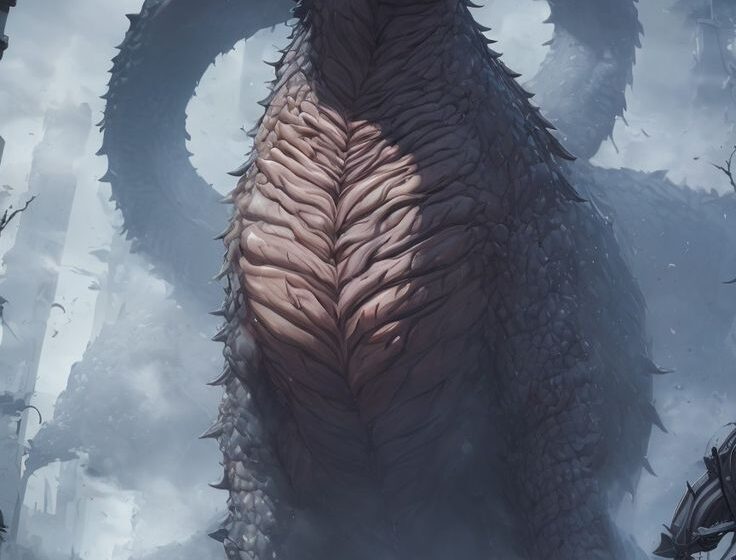In the world of Dungeons & Dragons, few creatures are as terrifying and iconic as the Death Knight. A creature of death, destruction, and unholy power, the Death Knight is an undead warrior who was once a noble hero, often corrupted by dark forces. These fearsome enemies embody the tragic consequences of a fall from grace and serve as powerful antagonists in campaigns. Whether you’re a Dungeon Master looking to introduce a Death Knight into your game or a player seeking to learn more about this monster, this guide will provide you with everything you need to know about the Death Knight in D&D 5th Edition.
What is a Death Knight?
A Death Knight is a type of undead creature, typically created by powerful dark magic or the will of a dark deity. Originally, Death Knights were once noble and skilled warriors, often paladins or knights, who have fallen from grace due to their connection with evil forces. Their transformation into a Death Knight occurs when they die but are resurrected by necromantic magic, forever bound to their master or dark purpose.
Despite their undead nature, Death Knights retain much of their former abilities, martial prowess, and intelligence. They are driven by their desire for vengeance, power, or the dark commands of their masters. They are no longer bound by the moral compass that once guided them, now serving evil causes without mercy or hesitation.
Death Knight Origins and Lore
The backstory of a death knight 5e is often tied to their life before their transformation. Many were once valiant paladins or mighty warriors who fought for justice or righteousness. However, their fall from grace typically occurs due to a tragic event or a terrible mistake.
Some Death Knights are cursed by their own gods or betrayed by those they once served. Others make a dark pact with an evil force, such as a demon lord or a necromancer, in exchange for forbidden power. The common thread among all Death Knights is their transformation from heroic figures into ruthless undead champions, eternally bound to a life of destruction and vengeance.
Death Knight as a Villain
Death Knights are ideal for use as powerful villains in a campaign. Their tragic backstory and immense power make them both sympathetic and terrifying. As a Dungeon Master, you can introduce a Death Knight as the leader of an undead army, the servant of an evil deity, or a fallen champion seeking revenge on those who wronged them. Their presence is always felt, and they are often surrounded by an aura of fear and death.
Death Knight Stats and Abilities
The Death Knight is a CR 17 (Challenge Rating 17) creature, making it a significant threat to high-level parties. Let’s break down the core stats and abilities that make this undead warrior so dangerous.
Stat Block Overview
- Armor Class (AC): 20 (plate armor and shield)
- Hit Points: 180 (19d10 + 76)
- Speed: 40 ft.
- Strength: 20 (+5)
- Dexterity: 14 (+2)
- Constitution: 18 (+4)
- Intelligence: 16 (+3)
- Wisdom: 14 (+2)
- Charisma: 16 (+3)
- Saving Throws: Constitution +9, Wisdom +7, Charisma +8
- Damage Immunities: Necrotic, Poison
- Condition Immunities: Charmed, Frightened, Paralyzed, Poisoned
- Senses: Darkvision 120 ft., Passive Perception 12
- Languages: Common, Infernal, and any languages it knew in life
- Challenge Rating: 17 (18,000 XP)
Special Traits
- Legendary Resistance (3/Day): If the Death Knight fails a saving throw, it can choose to succeed instead. This feature makes the Death Knight incredibly resilient, especially against spells or abilities that rely on saving throws.
- Rejuvenation: If a Death Knight’s body is destroyed, it will reform in 1d10 days unless the creature’s phylactery (or source of its unholy resurrection) is destroyed. This makes Death Knights difficult to permanently defeat without disrupting their connection to their source of power.
- Aura of Hate: The Death Knight and all undead creatures within 30 feet of it gain a bonus to melee damage rolls equal to the Death Knight’s Charisma modifier (+3). This makes surrounding undead minions more dangerous and allows the Death Knight to bolster its allies.
Actions and Attacks
- Multiattack: The Death Knight makes three melee attacks, which include its longsword and an additional attack with its Infernal Wound or unholy abilities.
- Longsword (Magical Weapon): The Death Knight’s longsword is a magic weapon, dealing 14 (2d6 + 5) slashing damage on a hit. On a critical hit, this weapon can also deal additional necrotic damage.
- Infernal Wound (Recharge 5-6): As an action, the Death Knight can make a melee weapon attack to deliver a potent necrotic wound that saps the life force of its target, draining hit points and possibly imposing disadvantage on saving throws. It deals 24 (4d6 + 5) necrotic damage, and the target must succeed on a DC 16 Constitution saving throw or be cursed.
Spellcasting
Death Knights are proficient in necromantic magic, and their spellcasting abilities allow them to control the battlefield in addition to their physical prowess. They can cast spells using Charisma as their spellcasting ability (spell save DC 16, +8 to hit with spell attacks), with the following traits:
- At Will: Thaumaturgy, Detect Magic
- 1st level (4 slots): Inflict Wounds, Shield of Faith, Hellish Rebuke
- 2nd level (3 slots): Mirror Image, Darkness
- 3rd level (3 slots): Counterspell, Animate Dead
- 4th level (3 slots): Blight, Staggering Smite
- 5th level (2 slots): Flame Strike, Cloudkill
- 6th level (1 slot): Circle of Death
These spells give the Death Knight a variety of offensive and defensive options, enabling it to manipulate the battlefield, summon undead minions, or incapacitate enemies with debilitating effects.
Roleplaying a Death Knight
Death Knights are often tragic figures, and their motivations can be complex. While they serve evil forces, they are also driven by a deep sense of loss, vengeance, or regret. Here are a few things to consider when roleplaying a Death Knight:
- Tragic Backstory: Most Death Knights were once noble warriors or paladins, making them deeply conflicted about their transformation. They may harbor regret for the actions that led them to their current state, and their motivations may be influenced by their former ideals.
- Unyielding Loyalty to Darkness: Death Knights serve their dark masters or their own twisted desires, and they will not hesitate to carry out evil deeds to further their cause. This could involve leading undead armies, tormenting innocent people, or seeking out forbidden magic.
- Sense of Immortality: As powerful undead creatures, Death Knights view themselves as near-immortal beings. Their understanding of time is warped, and they often perceive themselves as eternal, which makes them highly dangerous when combined with their drive for power.
How to Use a Death Knight in Your Campaign
The Death Knight makes for an excellent antagonist in a D&D campaign. Here are some ways you can incorporate it into your story:
- Antagonistic Force: The Death Knight can be the leader of an undead army, with the adventurers tasked with stopping their rise to power.
- Cursed Hero: If a Death Knight was once a hero, their return as an undead champion can be a tragic storyline for players to explore.
- Unwilling Servant: A Death Knight may be bound by a curse or an oath, forcing them to serve an evil deity or another dark power, creating an interesting dynamic between duty and inner conflict.
Conclusion
The Death Knight is one of the most terrifying creatures in Dungeons & Dragons 5e, combining martial strength, necromantic power, and a tragic backstory. As an undead warrior, it is a challenge for high-level adventurers, and its presence in a campaign can raise the stakes, bringing both physical and emotional conflict. Whether as a villain, a tragic figure, or a powerful undead commander, the Death Knight is a unique and memorable addition to any game.


